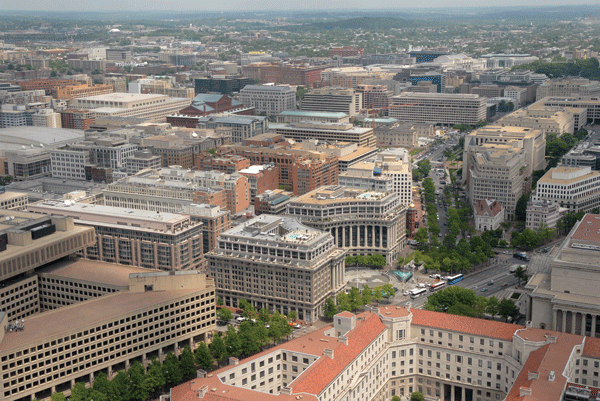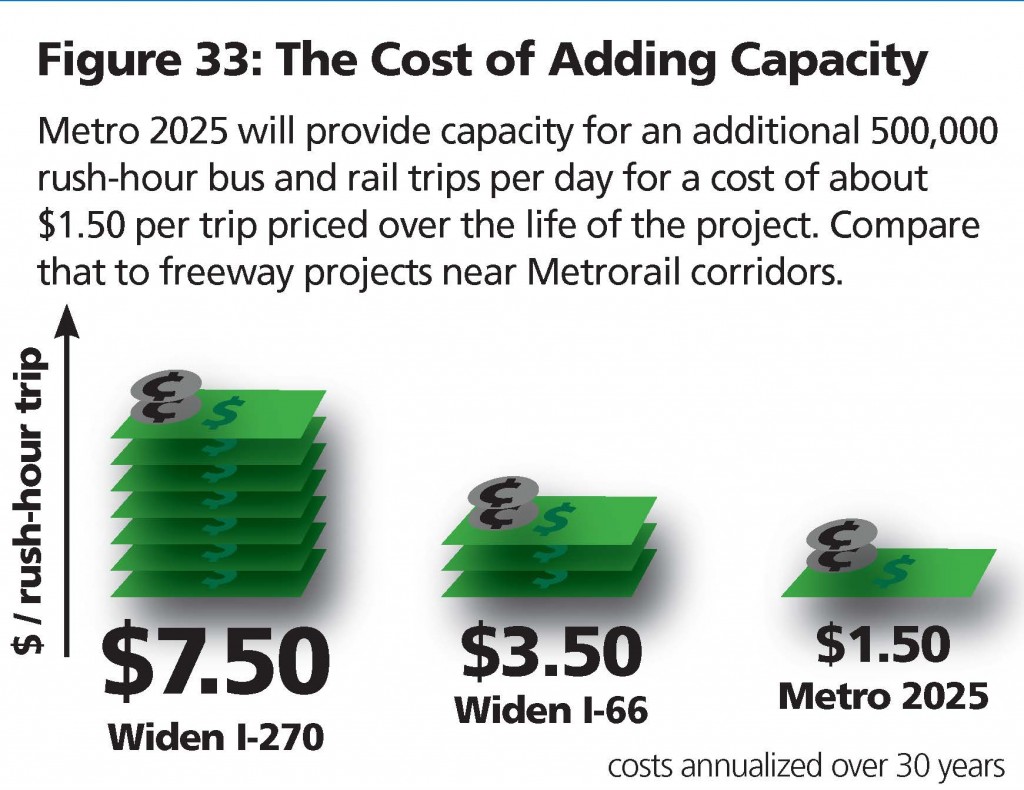Momentum: The Return on the Investment
The seven projects in Metro 2025 will  reduce road congestion, save money throughout the region, add riders to the Metro system, and make Metro rides more comfortable and efficient.
reduce road congestion, save money throughout the region, add riders to the Metro system, and make Metro rides more comfortable and efficient.
Capacity Increases to Support Additional Ridership
Metro 2025 investments will take 135,000 cars off the region’s roads, adding 300,000 boardings to transit, each day. This will help to reduce congestion while increasing transit ridership. With 100 percent eight-car trains, Metrorail will be able to carry the majority of those trips and have adequate capacity to carry the expected ridership of over one million daily trips by 2040. Implementing the full Priority Corridor bus network will enable increased bus use by over 100,000 daily trips by 2040. Next generation communications have helped draw new riders in Boston and Chicago. These investments save all travelers time and money, regardless of whether they ride.
We Lay the Groundwork for Expansion
Four of the Metro 2025 projects are prerequisites to outward expansion of Metrorail. Eighty percent of Metrorail riders travel to, or transfer at, one of a dozen core stations, but the core is reaching its capacity. Before expanding, the trains, tunnels, and stations downtown need to be able to handle the demand. Metro 2025 does this, and lays the groundwork for future rail transit expansion in the region.
Economic Growth Will Be Able to Occur Freely
Transitioning to 100 percent eight-car trains at maximum frequencies increases Metrorail’s capacity by 35 percent, and allows roughly 35,000 more people per hour to access downtown. This capacity increase is like adding 16-18 new lanes of freeways into downtown Washington – or two to four lanes on each of six major highways into the region’s core. It also means that the downtown can grow without adding as many as 30,000 additional parking spaces.
Unsafe and Unpleasant Crowding Will be Relieved
- Metro 2025 eliminates severe crowding on trains
 and provides adequate capacity on the system until 2040.
and provides adequate capacity on the system until 2040. - With 100 percent eight-car trains, passengers will be able to load and unload at core stations faster through more doors.
- A new connection at Rosslyn will allow Metro to increase the capacity on the Blue Line, increasing service to Virginia customers while relieving crowding.
Passengers Will Save Time and Money
- Drivers will save $130 million each year because of reduced congestion.
- Regional riders will save an additional $100 million per year by purchasing less fuel and other out-of-pocket travel costs.
- The region will avoid building 30,000 new parking spaces, saving $675 million.
- Core station improvements including pedestrian walkways will enable riders to walk directly to their destination rather than waiting for a train to go only one or two more stops.
- The PCN for buses will move riders up to 50 percent faster, reducing travel times by three to four minutes per trip
Metro Will Become More Efficient
- The PCN projects will allow Metro to run better bus service, at lower cost – estimated 5 percent higher speeds and 12 percent fuel savings.
- Additional rail pocket tracks or crossover locations will allow Metro to save millions per year through scheduling efficiencies and matching service to demand.
Metro Will Become More Reliable
- With storage tracks and crossover locations, Metro will be able to respond more effectively to incidents, stage trains for special events, and single-track along shorter segments.
- New rail connections at Rosslyn will add redundancy and flexibility to operations.
- Core station improvements will allow Metrorail to better adhere to schedules.
- Property tax revenues will increase, as accessibility via transit grows, adding property tax revenues to local coffers and helping to pay for local services.
For more information:
Download both the full Momentum plan and the Executive Summary.
Regional support is important to making Momentum a reality! A number of regional stakeholders have already endorsed Momentum. Please sign on and add your name to endorse Momentum and send the message that public transit is vital to the National Capital Region.


I really like the per-trip cost calculation that you present here. It’s a great way to compare!
Can you share more about the cost assumptions that you used to arrive at this?